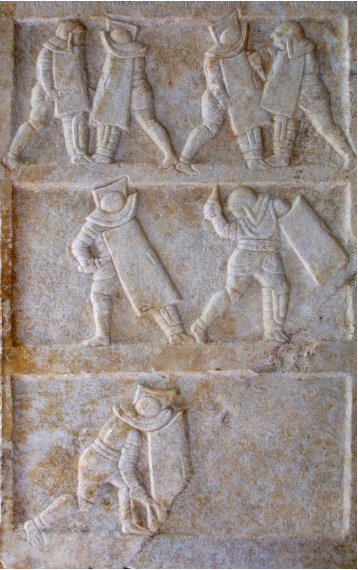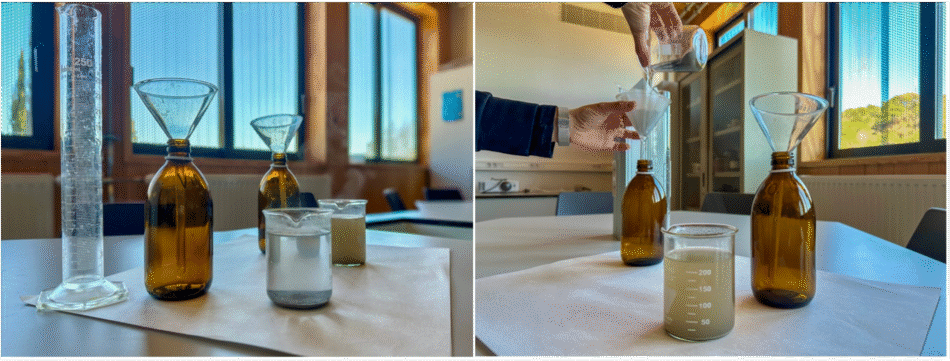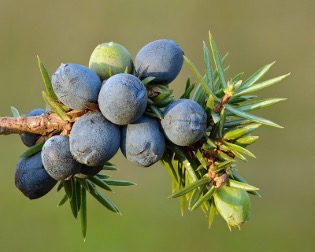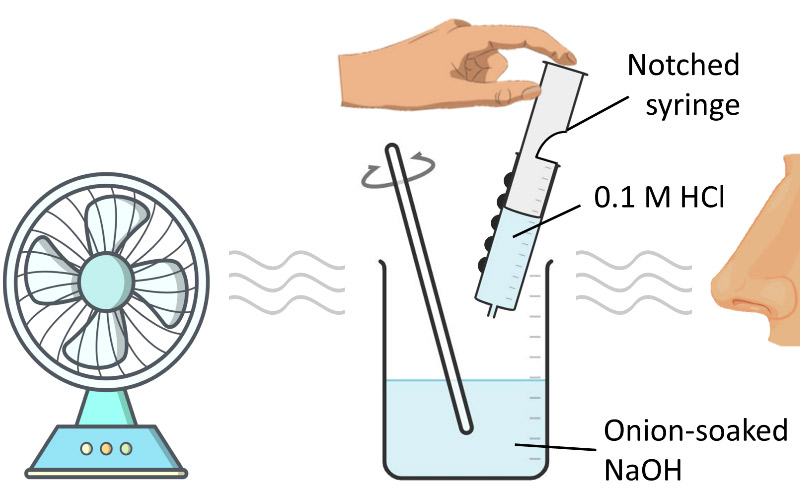Supporting materials
Download
Download this article as a PDF

We would like to thank Rosa Olivé for inspiring the first steps of this article. We are also grateful to Rimal Apothecary for generously providing Culinary Juniper Ash (Juniperus communis) for this experiment, and to our students, whose curiosity and enthusiasm gave it meaning.
Travel back to ancient Rome, test the calcium content of a gladiator recovery drink and compare it to today’s milk and sports drinks. History has never tasted this real!
This is a hands-on experiment that blends Roman history, nutrition science, and analytical chemistry. The activity supports cross-curricular learning in:
It also fosters key competences such as critical thinking, data interpretation, and interdisciplinary connections.
This proposal can be adapted for different ages and curricula. It is designed to connect a practical chemistry experiment (complexometric titration of calcium in plant ashes) with historical and nutritional perspectives. A complexometric titration is a type of chemical analysis in which metal ions, such as calcium, are measured by forming stable complexes with a reagent, most commonly EDTA (ethylenediaminetetraacetic acid, is a reagent that binds calcium ions at a one-to-one ratio, enabling quantitative measurement).
One of our goals is to bridge the gap between disciplines that are often kept apart, even though they have much more in common than we usually think.
In ancient Rome, gladiators were known as the sports superstars. Imagine a mix between football legends, MMA champions, and action movie heroes. Most were prisoners of war, slaves, or criminals, but even free men and fallen aristocrats could end up training in the ludus, the gladiator school.
They spent long hours training outdoors, often in the sun, and followed a strict diet known as gladiatoria sagina. It was rich in carbs, surprisingly low in meat, and mostly plant based.
Why? Because they needed endurance, not just muscle. Their goal was to fight long, hard battles and recover fast.
But there was a surprising ingredient in their recovery routine: plant ash. Pliny the Elder (1st century AD) quotes the scholar Varro, who recommended a mixture of hearth ash and water to heal internal injuries. He notes that gladiators used this remedy after combat.[1]
A 2014 study of gladiator remains from Ephesus (Turkey) revealed that they had denser bones than the average Roman. Chemical analysis of the bones showed high levels of strontium, which is likely from plant-based minerals such as ash.[2]


Researchers suggest that they drank an ash tonic, possibly mixed with vinegar and water to create a mildly alkaline drink, similar to an early sports drink. The vinegar also helped purify the water in a time without sanitation.[3]
Interestingly, other cultures used similar strategies. Across the ocean, the Navajo and Hopi peoples add juniper ash to traditional dishes as a source of calcium, which is especially useful for people with lactose intolerance. Just one gram of juniper ash contains as much calcium as a glass of milk![4]
Now it’s time to put the science to the test. In this lab activity, you’ll recreate the gladiator’s ash drink and use titration to measure its calcium content. Was ash truly the secret behind the Roman’s strength?
The estimated duration for the complete activity is 90 min, the duration is shorter (approximately 60 min) if it is carried out as a teacher demonstration.
We used clean shifted culinary juniper ash from ancient, reclaimed juniper wood (Juniperus communis) produced by Rimal Apothecary. This is the same type of ash traditionally used by the Navajo in their ancestral dishes. For classroom use, students may use ashes from other clean, untreated plant sources, such as oak, beech, hazel, olive wood, or even from natural fertilizer ash. If the ash is not certified as food-grade, it must not be consumed under any circumstances.
A buffer solution keeps the pH constant, ensuring that the color indicator works properly during titration.
An indicator changes color at the endpoint of the titration, showing when all calcium ions have reacted with EDTA.

According to published data,[5,6] juniper ash intended for human consumption contains approximately 280–300 mg of calcium per gram and a considerably lower amount of magnesium (around 18 mg/g). Therefore, in this protocol, the result obtained at pH 10 with Eriochrome Black T is interpreted as primarily calcium, while acknowledging that magnesium may cause a slight overestimation. Magnesium can be excluded optionally by repeating the titration at pH ≥ 12 using Murexide as the indicator.
Formula to convert the EDTA volume into calcium concentration:
mg of calcium/g of ash = (VEDTA − 1.48 ml) × 20.04 mg/gml
To analyse the outcome of your titration, use the calcium in ashes table provided in the Activity 1 worksheet to compare and interpret your results. This will help you understand how the calcium content in your sample relates to published values.

After completing the experiment, discuss the following questions in small groups or as a class. Use historical context, scientific reasoning, and modern nutritional knowledge to support your answers. An example answers sheet is provided in the supporting materials.
1. Could a handful of ashes really match a glass of milk?
Use your experimental results to compare the calcium content in the ash tonic with milk or sports drinks. What did your data suggest?
Complete the table below with reference values or your results.
| Sample | Calcium content | Equivalent to milk |
| Milk | 120 mg/100 ml | – |
| Plant ashes |
2. Is calcium from ashes as bioavailable as the calcium in milk?
Bioavailability describes how much of a nutrient your body can actually absorb and use. Even if some foods are rich in nutrients, your body may not be able to easily access them.
3. Strategies to improve calcium absorption
Before answering, you’ll need to read the introduction text again carefully. Three subtle hints are hidden in the way gladiators ate, trained, and prepared their drink. These clues can help you understand how they might have improved calcium absorption.
Think of three possible strategies gladiators could have used to absorb more calcium from their diet.
Are any of these strategies still used today? Think of some examples.
4. Would you drink an ash tonic after a workout?
5. What parallels can you find between Roman nutrition and today’s sports culture?
Think about supplements, recovery drinks, daily routines, rituals, and how athletes manage their public image. Can you find modern equivalents to the gladiator ash drink?
Although ash contains high levels of calcium, milk and other natural foods provide forms of calcium that are more easily absorbed by the body. Bioavailability, not just quantity, is key. Gladiators may have boosted absorption through sun exposure, vinegar drinks, and intense training. These are strategies that are still used today. Their ash tonic, once a trusted recovery drink, shares surprising parallels with modern sports nutrition. This highlights how ancient and modern athletes alike rely on science, culture, and even marketing to shape their diets.
[1] Quote of C. Plinius Secundus in his book Naturalis historia (XXXVI, book 2, chapter 2): https://scaife.perseus.org/reader/urn:cts:latinLit:phi0978.phi001.perseus-lat2:20.2/?q=quidam%20adversus&qk=form
[2] Lösch S et al. (2014) Stable isotope and trace element studies on gladiators and contemporary Romans from Ephesus (Turkey, 2nd–3rd c. AD) – Implications for differences in diet. PLOS ONE 9. doi: 10.1371/journal.pone.0110489
[3] Ash tonic and vegetarian diet of Roman gladiators: https://www.sciencedaily.com/releases/2014/10/141020090006.htm
[4] Thesis on quantification and comparison of calcium in juniper ash and soil used in traditional Navajo foods: https://openknowledge.nau.edu/id/eprint/4935/
[5] Information on harvesting and the nutritional value of indigenous foods: https://www.bie.edu/sites/default/files/documents/harvest_of_the_month_april_juniper_ash.pdf
[6] Christensen NK et al. (1998) Juniper ash as a source of calcium in the Navajo diet. Journal of the American Dietetic Association 98: 333–334. doi: 10.1016/S0002-8223(98)00077-7
This article offers an inspiring way to connect chemistry, biology, and history through a hands-on investigation. By analysing the calcium content of a recreated Roman “gladiator tonic,” students explore not only titration and data interpretation but also nutrition, bioavailability, and the evolution of sport. The activity encourages discussion about how ancient practices can be understood – and sometimes validated – through modern science.
Teachers can adapt the experiment for different age groups: younger students (14–16) can observe a demonstration and discuss the cultural and biological context, while older students (16–19) can perform the full EDTA titration and quantitative analysis. With clear safety guidance and easily available materials, this is an interdisciplinary activity of STEAM subjects.
Alice Severi, ISIS Follonica, Italy
Download this article as a PDF

Even everyday scents have the power to take us back in time, awakening half-forgotten memories. With Gianluca Farusi’s help, you can take your…

Discover simple adaptations to apparatus and experiments that make practical chemistry more accessible to students with vision impairment.

Which is better: tap or bottled water? Try these activities based on simple analyses, a debate, and a blind tasting to learn about drinking water and encourage sustainable habits.